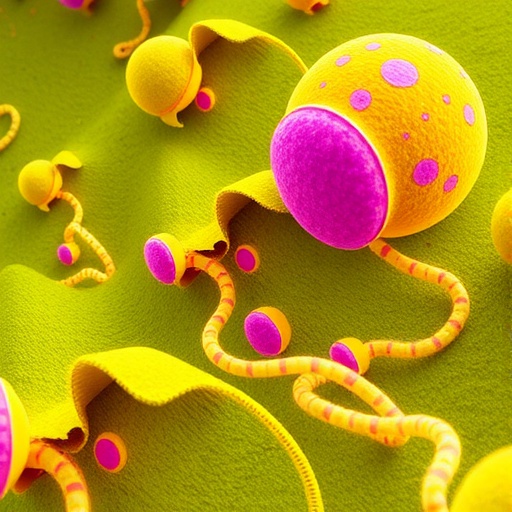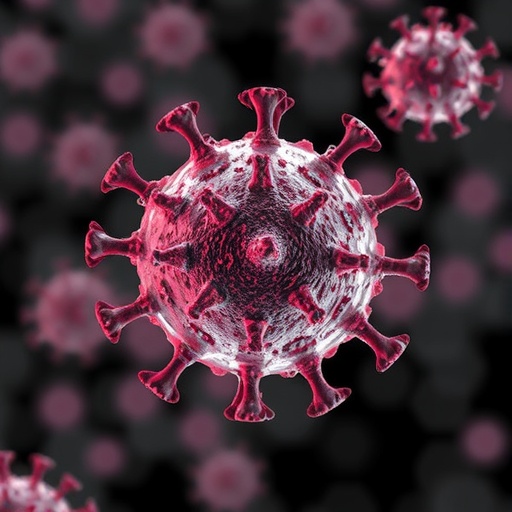In the microscopic world where bacteria thrive and compete, communication and environmental sensing are paramount for survival and adaptation. A groundbreaking study has now illuminated how Pseudomonas aeruginosa—a clinically significant pathogen—perceives and responds to the complex chemical landscapes it inhabits during the earliest stages of biofilm formation. Employing a brilliant mechanochemical strategy, the bacteria are shown to sense trails of exopolysaccharides (EPS) secreted by their predecessors, enabling a coordinated surface colonization that blurs the line between solitary free-swimming cells and established biofilm communities.
Biofilms, the structured communities of bacteria adhering to surfaces, present formidable challenges in medical and industrial contexts due to their heightened resistance to antimicrobial agents. Pseudomonas aeruginosa is notorious for its role in chronic infections and environmental persistence, largely attributable to its adeptness at forming biofilms. The initial formation of these biofilms hinges on individual bacterial cells detecting cues from their surroundings and modifying their motility and gene expression accordingly. Central to this sensory process is cyclic di-GMP (c-di-GMP), a ubiquitous bacterial second messenger that modulates transitions from motile to sessile lifestyles, yet the exact signals and receptors activating c-di-GMP in P. aeruginosa have remained elusive.
In this pioneering research, researchers have leveraged advanced methodologies, including glycopolymer-patterned surfaces and dual reporter systems for second messengers, to dissect the signaling pathways involved in P. aeruginosa surface sensing. Crucially, they focused on the exopolysaccharide Psl, a key adhesive matrix component secreted by P. aeruginosa. The bacteria were found not just to passively adhere to Psl deposits but actively to detect Psl “trails” — polysaccharide footprints left on surfaces by previous cellular migrants. This sensory detection remarkably translates into increased internal levels of cyclic di-GMP and cyclic AMP, signaling molecules that together modulate motility and biofilm development.
One of the most striking revelations from this work is the absence of previously assumed canonical receptors for Psl in the signaling cascade. Instead, the authors show that P. aeruginosa utilizes a more indirect, mechanochemical form of sensing that involves its type IV pili (T4P)—dynamic, retractable filamentous appendages instrumental in surface motility, known as twitching motility. These T4P physically interact with the Psl-rich exopolysaccharide matrix through specific adhesins located on the bacterial cell body, such as the mannose-binding protein CdrA.
The sensing mechanism described hinges on a physical tug-of-war: the T4P generate force by pulling on the adhesins that simultaneously bind to the exopolysaccharide trails laid down by other cells. This “pulling against” resistance is hypothesized to generate mechanical signals, which then translate into biochemical signals inside the cell, raising levels of the second messengers c-di-GMP and cAMP. This hybrid mechano-chemical signaling bridges the gap between mechanical force detection and chemical signaling pathways, creating a sophisticated sensory feedback loop previously unrecognized in bacterial surface interactions.
Importantly, this mechanosensitive detection facilitates a previously uncharacterized intermediate population of P. aeruginosa cells that exhibit characteristics of both planktonic (free-swimming) and biofilm-forming states. These cells show elevated motility, yet also sustain increased levels of biofilm-promoting signals, positioning them ideally to follow EPS trails efficiently. Such transitional populations are critical for understanding how biofilm formation initiates at spatially defined loci and propagates over time.
The use of genetically engineered mutants further strengthened the mechanistic insights. Mutations impairing the ability of T4P to generate force or mutations that disrupt adhesin-EPS binding abrogated the sensory response and subsequent second messenger elevation. This clearly established the necessity of the complex interplay between physical pili mechanics and biochemical adhesion for accurate sensing and response.
This discovery overturns previous paradigms that largely rested on the presence of specialized chemical receptors for surface polymer cues. Instead, in Pseudomonas aeruginosa, mechanotransduction mediated by T4P and cell-body adhesins underpins a novel sensory modality, one that may be widely employed across a host of bacterial species that rely on pili or similar appendages for movement and surface colonization.
The ramifications of these findings extend far beyond basic microbiology. Understanding the molecular logic behind how bacteria sense and react to exopolysaccharide trails can inform novel antimicrobial strategies aimed at disrupting early biofilm development. Targeting either the mechanical function of T4P or the adhesin-EPS interaction surface could incapacitate bacterial navigation on surfaces, limiting biofilm establishment and persistence on medical devices or industrial pipelines.
Beyond pathogenic biofilms, the study suggests a broader, potentially generalizable mechanism for surface chemosensing in bacteria. Similar mechanochemical systems could be operational in myriad environmental contexts where bacteria navigate the chemically heterogeneous surfaces of soil, water, plant roots, or host tissues. This work opens new lines of investigation into how bacteria interpret and integrate complex physical and chemical stimuli in real time, modulating their social behaviors accordingly.
Technically, the researchers combined fluorescence-based dual reporter strains capable of concurrently measuring c-di-GMP and cAMP levels with detailed single-cell longitudinal tracking on custom-engineered surfaces designed to simulate the spatial patterning of EPS seen in natural biofilms. This sophisticated experimental design was key in correlating the physical interactions at the pili-adhesin interface with intracellular second messenger dynamics.
Additionally, the identification of adhesin CdrA as a critical mediator of this sensing process highlights the multifunctional roles played by bacterial surface proteins. While traditionally considered mere “stickers” promoting physical adhesion, this protein evidently also serves as a mechanosensor, linking physical engagement with polysaccharides to intracellular signal transduction.
In essence, Pseudomonas aeruginosa does not simply “stick” to a surface or a chemical cue; it actively “feels” its environment through the tugging and binding forces transmitted through its appendages and adhesins. This active sensing strategy likely enhances the bacterium’s ability to discriminate favorable colonization zones and optimize biofilm formation timing, arguably conferring a powerful evolutionary advantage in competitive ecosystems.
This elegant mechanochemical surveillance strategy presents an exciting conceptual advance in microbial physiology, revealing that bacteria exploit the physics of force transmission in conjunction with chemical sensing to govern complex social behaviors. As research proceeds, it will be fascinating to discover to what extent similar mechanisms underlie intercellular communication, host colonization, and environmental adaptation across the microbial world.
In summary, this study offers an unprecedented glimpse into the tactile intelligence of Pseudomonas aeruginosa as it navigates its surface milieu. By sensing and decoding exopolysaccharide trails left by others, mediated through a concerted action of type IV pili and dedicated adhesins, the bacterium balances motility with biofilm development, orchestrating community assembly with remarkable precision. This discovery not only reshapes our understanding of bacterial surface sensing but also poses provocative questions about how mechanical forces integrate with chemical signals to drive microbial life.
Subject of Research: Bacterial surface sensing mechanisms; biofilm formation in Pseudomonas aeruginosa; mechanotransduction via type IV pili and adhesins.
Article Title: Pseudomonas aeruginosa senses exopolysaccharide trails using type IV pili and adhesins during biofilm formation.
Article References:
Schmidt, W.C., Lee, C.K., Zheng, X. et al. Pseudomonas aeruginosa senses exopolysaccharide trails using type IV pili and adhesins during biofilm formation. Nat Microbiol (2025). https://doi.org/10.1038/s41564-025-02087-4
Image Credits: AI Generated
Tags: advanced biofilm research methodologiesbacterial adhesion mechanismsbacterial communication and sensingbiofilm resistance to antibioticschronic infections caused by Pseudomonascyclic di-GMP in bacteriaenvironmental persistence of pathogensexopolysaccharide signalingmechanochemical strategies in microbiologymicrobial lifestyle transitionsPseudomonas aeruginosa biofilm formationsurface colonization by bacteria






